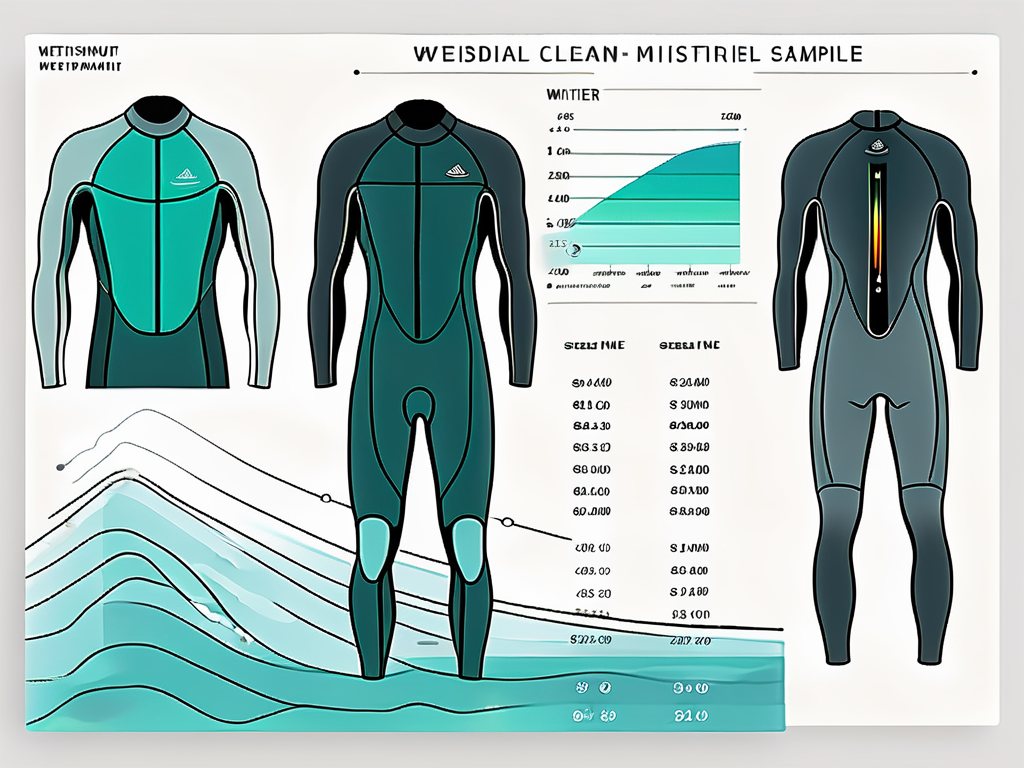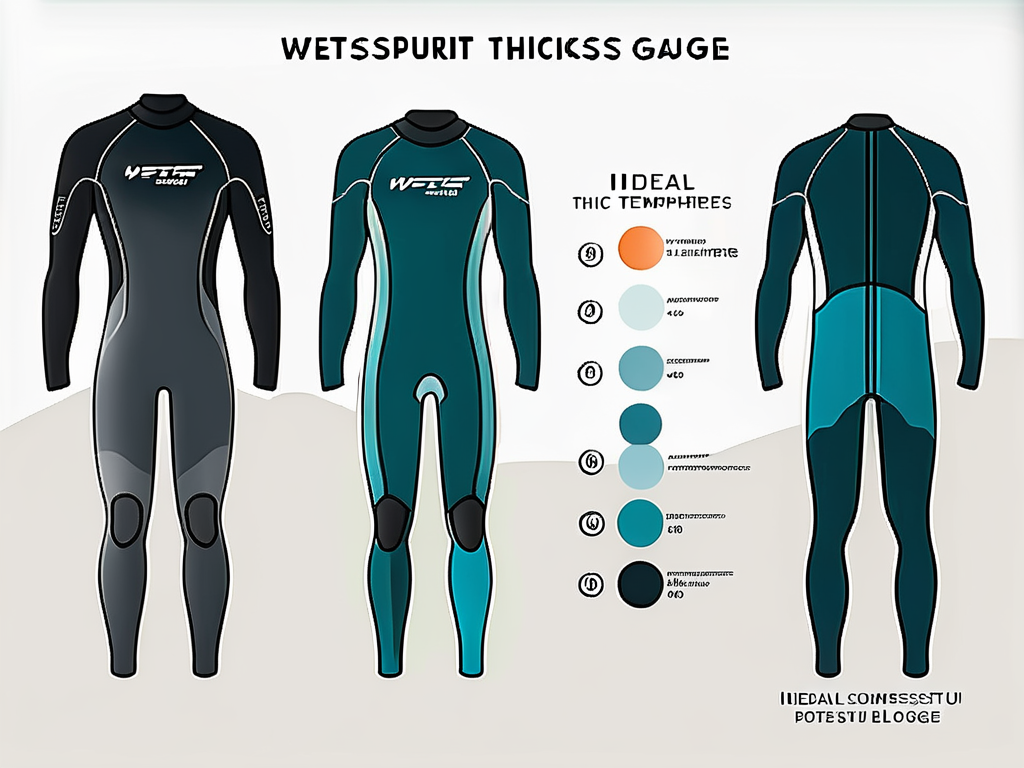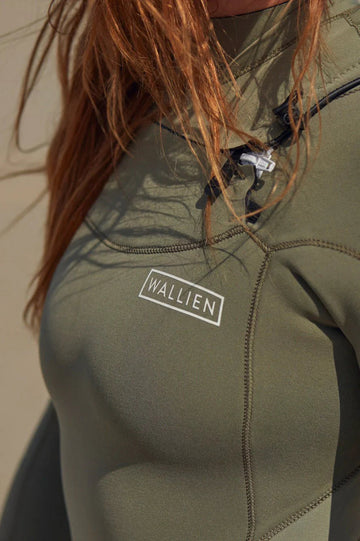Wetsuits are essential gear for water sports enthusiasts who brave various water temperatures. Whether you're a surfer catching waves or a diver exploring the deep sea, choosing the right wetsuit thickness can make all the difference in your comfort and performance. In this comprehensive guide, we'll demystify wetsuit thickness and help you make an informed decision to suit your needs.
Demystifying Wetsuit Thickness
Understanding the science behind wetsuit thickness is the key to selecting the ideal wetsuit for any water temperature. The thickness of a wetsuit is typically measured in millimeters (mm) and refers to the neoprene material's thickness used in its construction. Neoprene, a synthetic rubber, is the ideal material due to its insulating properties and flexibility.

Understanding the Science Behind Wetsuit Thickness
Neoprene works by trapping a thin layer of water between your body and the wetsuit. This water quickly warms up and creates an insulating barrier, keeping you warm even in cold water. The thicker the neoprene material, the more effective it is at retaining heat.
But did you know that the type of neoprene used can also impact the wetsuit's performance? There are different types of neoprene available, each with its own unique characteristics. Some neoprene blends are designed to be more stretchy, providing enhanced flexibility, while others prioritize durability and strength. So, when considering wetsuit thickness, it's essential to consider the type of neoprene used as well.
Besides warmth, neoprene thickness also affects flexibility and buoyancy. Thicker neoprene offers better insulation but may restrict movement, while thinner neoprene allows for more freedom of movement but provides less insulation.
Decoding the Wetsuit Thickness Chart
Wetsuit manufacturers often provide a wetsuit thickness chart that outlines the recommended thickness for different water temperatures. It's crucial to understand these charts to make an informed choice.
For example, a 5mm wetsuit is suitable for colder water temperatures (below 55°F / 12°C), while a 3/2mm wetsuit works well in warmer conditions (above 60°F / 15°C). The first number represents the thickness of the torso and legs, while the second number indicates the thickness of the arms and shoulders.
However, it's important to note that personal preference and tolerance to cold also play a role in selecting the right wetsuit thickness. Some individuals may feel comfortable in colder water with a thinner wetsuit, while others may require a thicker one for the same conditions. It's always a good idea to try on different wetsuits and consult with experts to find the perfect fit for your specific needs.
Choosing the Right Wetsuit Thickness for Your Needs
Now that you comprehend the basics, let's dive deeper into selecting the perfect wetsuit thickness to match the water temperature and your specific requirements.
When it comes to enjoying water sports and activities, comfort and protection are paramount. The right wetsuit thickness can make all the difference in ensuring an enjoyable experience in the water. So, let's explore some additional factors to consider when selecting the ideal wetsuit thickness.
Matching Wetsuit Thickness to Water Temperature
The primary factor in determining wetsuit thickness is the water temperature. Below, we'll break down the recommended thickness range for various water temperature ranges:
- Warm Water (75°F+ / 24°C+): Opt for a 2mm shorty wetsuit or rashguard.
- Moderate Water (65-75°F / 18-24°C): Choose a 3/2mm wetsuit for comfort.
- Cold Water (55-65°F / 12-18°C): Consider a 5/4mm wetsuit for warmth.
- Very Cold Water (Below 55°F / 12°C): Invest in a 6/5mm or thicker wetsuit, hood, and gloves for maximum insulation.
Remember, individual tolerances vary, so some individuals might require more or less insulation than others. It's always a good idea to test different thicknesses and see what works best for you.
Additional Factors to Keep in Mind When Selecting Wetsuit Thickness
While water temperature is crucial, several other factors can influence your wetsuit thickness choice:
- Activity Level: If you're engaging in highly active water sports like surfing, a slightly thinner wetsuit might be preferable to ensure freedom of movement. However, if you're planning on spending long periods in the water, a thicker wetsuit will provide better insulation.
- Temperature Perception: Some people are naturally warmer or colder, so adjust the thickness accordingly. If you tend to feel the cold more, opting for a thicker wetsuit can help keep you comfortable and extend your time in the water.
- Wind Conditions: Wind can significantly affect how cold you feel, so thicker neoprene might be necessary to combat wind chill. If you're planning to venture into windier areas or face gusty conditions, consider a wetsuit with added wind-resistant features.
- Sun Protection: In warmer climates, a thinner wetsuit combined with sunscreen might offer better comfort. However, don't forget the importance of sun protection. Look for wetsuits with built-in UPF (Ultraviolet Protection Factor) to shield your skin from harmful UV rays.
By taking these additional factors into account, you can ensure that your wetsuit thickness choice aligns perfectly with your needs, allowing you to fully enjoy your time in the water, no matter the conditions.
The Functionality of Wetsuit Thickness Unveiled
Now that we've covered the basics of wetsuit thickness, let's explore how it impacts performance in different water sports.

Exploring the Impact of Wetsuit Thickness on Performance
The appropriate wetsuit thickness can optimize your performance and enhance your overall experience. In activities where mobility is vital, such as surfing or paddleboarding, a thinner wetsuit can increase maneuverability and flexibility. Conversely, in activities like diving, where prolonged exposure to colder water is common, a thicker wetsuit provides maximum insulation and comfort.
Furthermore, a well-fitted wetsuit with the right thickness can reduce drag in the water, allowing you to move more effortlessly and efficiently, resulting in improved performance.
When it comes to selecting the ideal wetsuit thickness, it's essential to consider not only the water temperature but also your own tolerance to cold. For instance, a 3mm wetsuit may be suitable for some individuals in waters around 70°F, while others may prefer a 4/3mm wetsuit for added warmth. Understanding your body's reaction to different water temperatures can help you make an informed decision when choosing the right wetsuit thickness for your needs.
Factors Influencing Wetsuit Thickness Selection
Aside from water temperature and personal preference, other factors can influence the choice of wetsuit thickness. The duration of your water activities plays a crucial role in determining the appropriate thickness. For shorter sessions or more active sports, a thinner wetsuit may be preferable to prevent overheating and ensure freedom of movement.
Additionally, the fit of the wetsuit is paramount in maximizing its effectiveness. A wetsuit that is too thick can restrict movement and cause discomfort, while one that is too thin may not provide adequate insulation in colder conditions. Finding the perfect balance between thickness and fit is key to unlocking the full potential of your wetsuit.
Finding the Goldilocks Zone: Is There Such a Thing as a Wetsuit That's Too Thick?
While thicker wetsuits offer more insulation, there is a point where they become too thick and impede movement. It's important to strike a balance between warmth and mobility. An excessively thick wetsuit can restrict your range of motion, make paddling difficult, and hinder your overall performance in water sports.

For most water temperatures, adhering to the recommended thickness chart and considering personal factors should lead you to the ideal wetsuit thickness. Remember, it's crucial to try on several wetsuits to ensure the perfect fit and comfort.
In addition to thickness, the material of the wetsuit also plays a crucial role in its performance. Neoprene is the most common material used in wetsuits due to its insulating properties and flexibility. However, the quality of neoprene can vary, with higher-grade neoprene offering better insulation and durability. Some wetsuits also feature added technologies like thermal lining or smooth skin panels for enhanced warmth and reduced water flushing.
Furthermore, the design of the wetsuit, including seam construction and fit, can greatly impact its effectiveness. Flatlock seams are comfortable but may allow water to seep through, while sealed and taped seams provide better insulation. A proper fit is essential not only for comfort but also for maximizing the wetsuit's thermal efficiency.






